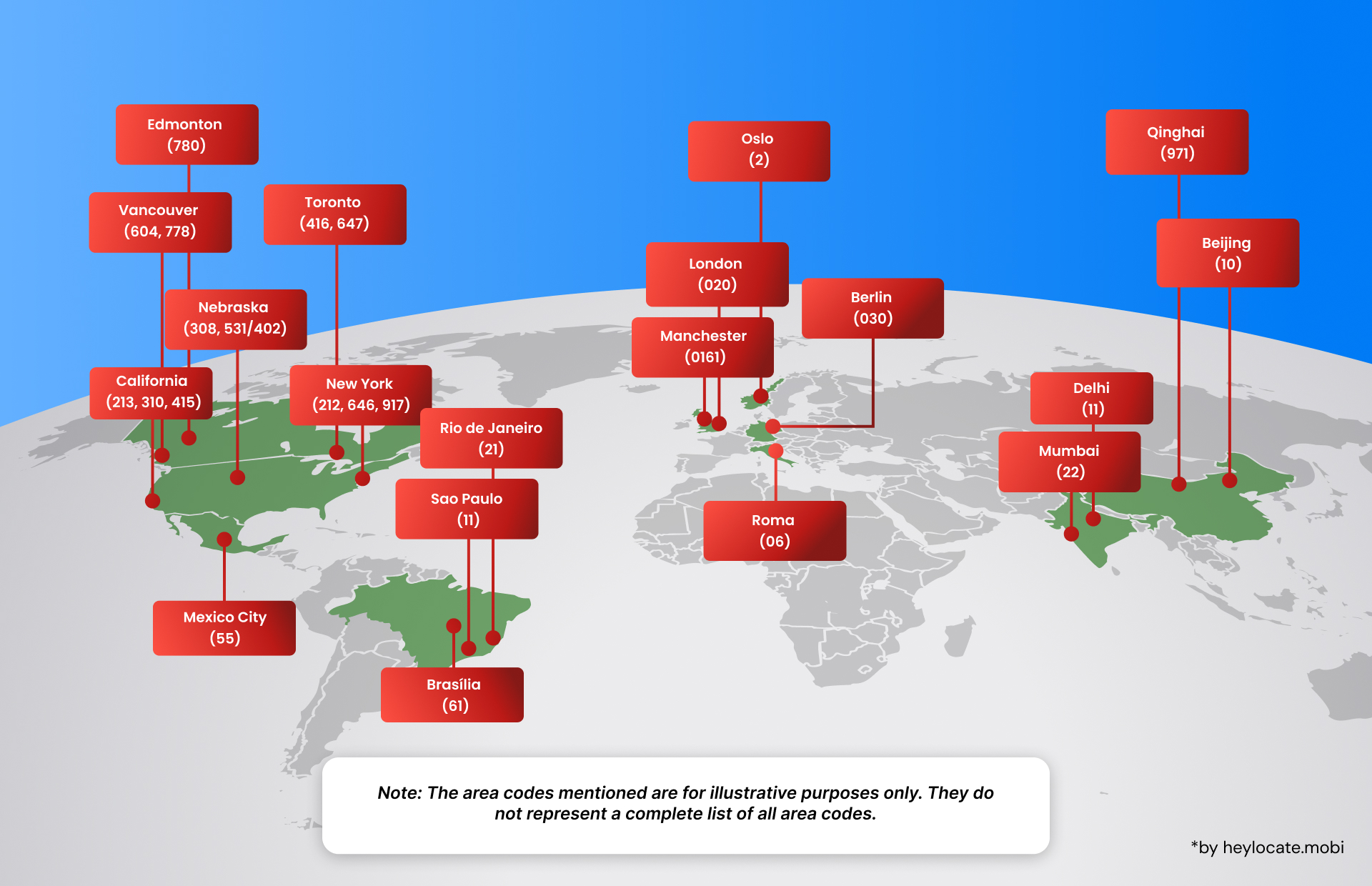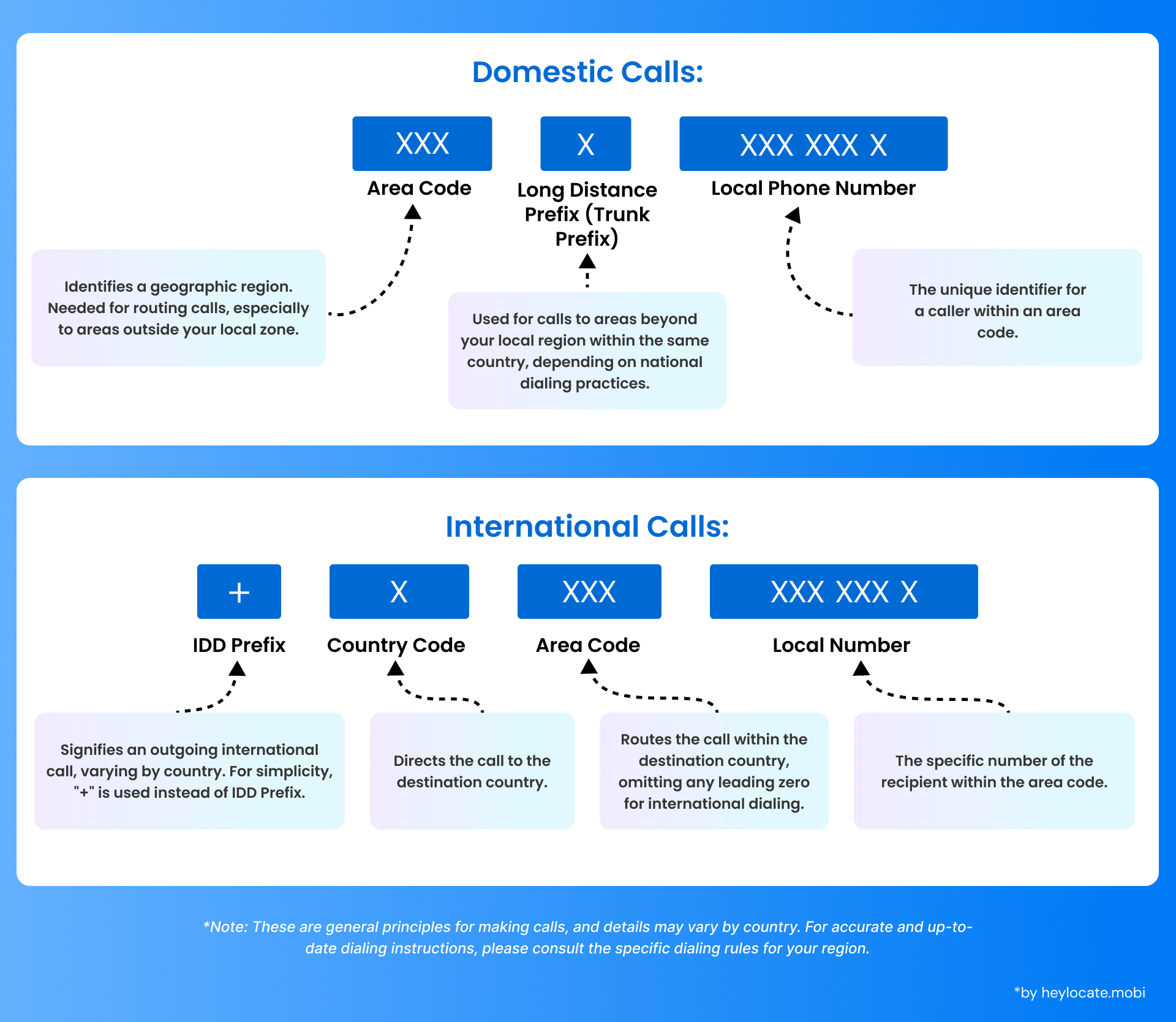Area Code
What is an Area Code?
Area code is a numerical code that is assigned to specific geographic regions for telecom communication purposes. This unique number sequence is an indispensable feature of phone numbers, serving the purpose of routing calls to the appropriate part of the city or to other regions of the world. Knowing about area codes and how to use them correctly is vital for successful and time-saving national and international telephone calls.

Historical Background
Area code designation was inexorably associated with the telephone network expansion in the early days. Due to complex geography, call routing over huge distances became crucial. In 1947, the Bell System assigned area codes for seamless connectivity nationwide.
NANP, the North American Numbering Plan, separated the United States and Canada regionally into several NPAs. Each NPA had its own distinct area code of three digits, facilitating even more accurate call routing across borders within the continent.
NANP was a revolutionary development in telecom, making it a role model for area code systems in the world. The territory has also extended to Puerto Rico, the U.S. Virgin Islands, and some of the Caribbean countries over time. Now, there are more than 20 nations and districts under the NANP with the same country codes and area code numbers.
Area Codes Around the World
Even though NANP is a widely recognized area code system in North America, different countries have different approaches to organizing their area codes. These adjustments are frequently based on the distinct requirements and tastes of each country’s telecommunication development.
Formats and Dialing Rules
In global area codes, format and dialing rules differ. For instance, in some countries, the number of digits in area codes is fixed, while in others, it varies in length. Consequently, how the area code is dialed and having trunk prefixes or country access codes can differ in various countries. This can sometimes be a source of confusion for foreign callers or for travelers.
Specific Examples by Country
To illustrate the variations in area code systems, let’s explore some specific examples:
- United States: Three-digit area code followed by the seven-digit local code.
- Brazil: Area code, two-digit, followed by an eight-digit local number.
- Australia: 10-digit area code with a leading zero for local calls, followed by an eight-digit local number.
- New Zealand: A one- to three-digit area code followed by a six- to seven-digit local number.
- Argentina: Two-digit area code followed by eight-digit local number.
- Austria: A four or five-digit area code is followed by a seven-digit local number.
- Germany: A two-digit to five-digit area code followed by a four-digit to nine-digit local number.
- Japan: Area code with two to five digits followed by four to nine digits local number.
- Mexico, Peru, Syria: Varying the number of digits for the area code and the local number.
- United Kingdom: Two- to five-digit area code and then seven-digit local number followed by some additional subtleties (for London dialing).
These instances also show that the various area code systems are worldwide.
Dialing Practices and Innovations
Along with technological advances, the connection between telephone numbers and geographical areas is now more flexible. Innovations like the local number portability and the Voice over Internet Protocol (VoIP) introduce new ways and communication difficulties.
Fixed vs. Variable Length
A major difference between area codes and phone numbers is between fixed-length and variable-length formats. Fixed-length systems have a preset number of digits for both area code and local numbers. This eliminates the complexity of call routing and standardizes dialing programs.
Instead of that, variable length systems have the advantage of giving a variable number of digits to the area codes and local phone numbers. This can be an advantage for population growth but also leads to the challenges of handling call routing and dialing practices.
Local Number Portability and VoIP
- Local Number Portability gives people an opportunity to keep the phone number from previous provider in case of switching the service provider or changing location. It detaches numbers from any particular geographic location; therefore, the numbers can be used in any part of the world.
- Voice over Internet Protocol (VoIP), communications are made using the internet, previously made by traditional phone networks. Through VoIP, assigned phone numbers no longer take regard of the physical place of an individual, thereby dissolving the association of geographical regions and phone numbers.
How to Dial Area Codes
Dialing area codes correctly is essential for successful phone calls. The procedures vary depending on whether the call is domestic or international.

Domestic and International Dialing
Dialing phone numbers within a country follows specific guidelines based on its telecommunication setup. In numerous nations, like the United States, a trunk prefix or national access code precedes the area code and local number. This signifies an inter-regional call. However, the exact prefix code varies across countries. For international calls, one must dial an exit code, typically two digits, followed by the destination country’s code and the local number. This hierarchical system enables seamless communication globally.
When placing a call to a foreign nation, specific steps are necessary to guarantee the communication reaches its intended recipient. The international access code, commonly referred to as the international direct dialing (IDD) prefix, must be dialed initially. This code enables the call to be routed from the originating country to the global telephone network. The IDD prefix differs across nations and is typically succeeded by the country code of the desired destination.
References:
- Nunn, W.H. (1952). “Nationwide Numbering Plan”. Bell System Technical Journal. 31 (5): 851
- AT&T, Notes on the Network, Section 10-3.02, p.3 1980
- O. Myers, C. A. Dahlbom, Overseas Dialing: A Step Toward Worldwide Communication, Telephone Engineer & Management Vol 65(22), 46 (1961-11-15) p.49
- J.J. Pilliod, H.L. Ryan, Operator Toll Dialing—A New Long Distance Method, Bell Telephone Magazine
- North American Numbering Plan (NANP): https://en.wikipedia.org/wiki/North_American_Numbering_Plan
- History of telephony: Alexander Graham Bell – Wikipedia
- International Telecommunication Union (ITU): ITU (This organization plays a crucial role in establishing global telecommunication standards)